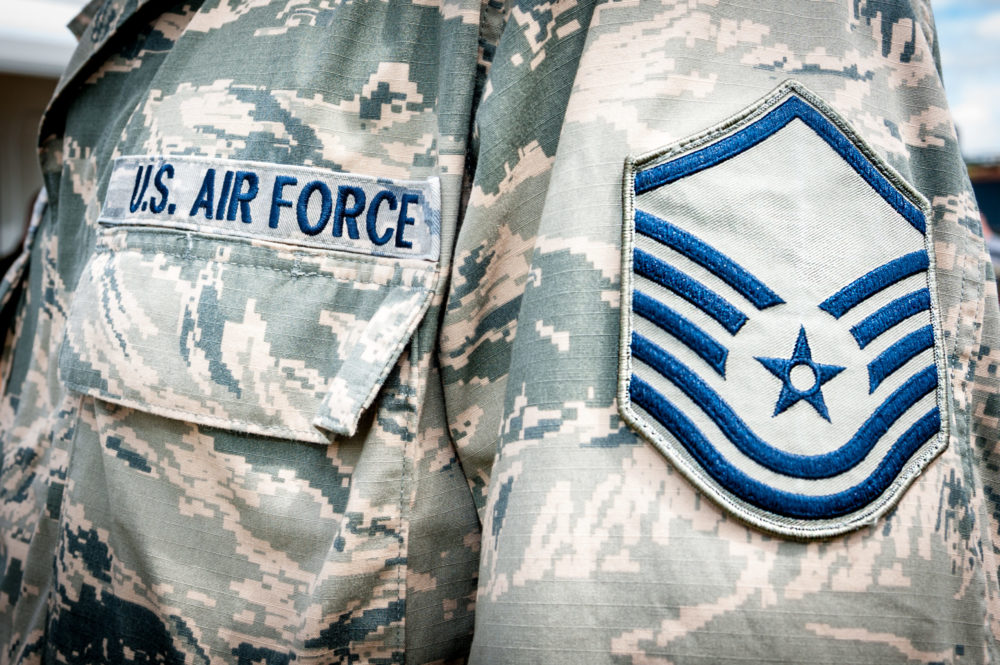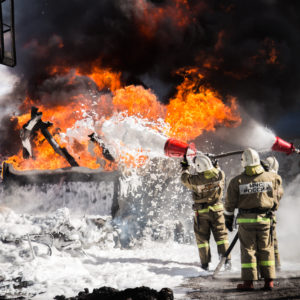Air Force AFFF Exposure Caused Prostate Cancer, According to Lawsuit Against Foam Manufacturers
Use of AFFF in the Air Force placed military service members and other residents at an increased risk of prostate cancer and other health problems, according to complaint.

A former Air Force firefighter has brought a lawsuit against AFFF (aqueous film-forming foam) manufacturers, indicating that he developed prostate cancer after years of exposure to the firefighting foam during his military career, alleging the companies responsible for the products knew about the potential health risks and withheld warnings from users.
The complaint (PDF) was filed by Tracy Mitchem in the U.S. District Court for the District of South Carolina on July 25, indicating that Air Force AFFF use caused him to repeatedly be exposed to toxic chemicals known to increase the risk of cancer. However, at no point during his training or career as an Air Force firefighter was Mitchell warned that AFFF contained toxic or carcinogenic chemicals.
AFFF has been used for decades by the U.S. Air Force and other branches of the military, to supress of fuel-based fires. However, the foams contain a number of chemical compounds known as per- and polyfluoroalkyl substances (PFAS), which persist in both the environment and human body for extremely long periods of time, earning them the nickname “forever chemicals”.
Studies have linked exposure to the chemicals to an increased risk of various types of cancer, according to the complaint filed by Mitchell, which now joins a growing number of AFFF lawsuits being pursued against more than a dozen chemical and safety equipment manufacturing companies. The claims include allegations that AFFF caused prostate cancer, testicular cancer, kidney cancer, bladder cancer, pancreatic cancer, thyroid cancer and other injuries.

Learn More About
Exposure to firefighting foam chemicals may result in an increased risk of cancer for firefighters, military and airport personnel.
Learn More About this Lawsuit SEE IF YOU QUALIFY FOR COMPENSATIONAir Force AFFF Exposure Risks
According to the lawsuit, Mitchem, of Oklahoma, served as an Air Force firefighter from 1982 until 1989, at which time he was stationed at several Air Force bases throughout the country, including Lackland Air Force Base and Sheppard Air Force Base in Texas, Cannon Air Force Base in New Mexico, and Seymour Johnson Air Force Base in North Carolina.
During that time, Mitchem was exposed to AFFF during Air Force training exercises and firefighting activities, as well as from drinking water on the military bases, which had become contaminated with toxic chemicals from the firefighting foam.
The lawsuit notes what Mitchem experienced is not uncommon on military bases nationwide, particularly in the Air Force, which relies heavily on petroleum fuels in its use of aircraft and other vehicles.
Last year, the U.S. Department of Defense conducted an assessment of PFAS contamination on U.S. military bases, indicating 24 installations, with a total population of 175,000, exposed residents to PFAS in drinking water. However, some environmental groups have contested that number, saying at least 116 military instillations are contaminated, exposing more than 640,000 residents to toxic AFFF and PFAS.
Prostate Cancer Caused by AFFF Foam
In 2009, Mitchem indicates that he was diagnosed with prostate cancer, which he directly relates to his exposure to fluorochemicals in AFFF used during his Air Force career. However, he did not discover the link between his exposure to AFFF and prostate cancer until July 2021, since manufacturers of the products never provided warnings for members of the Air Force or other users.
Prostate cancer develops when cells in the prostate start to grow out of control. If left untreated the cancer can spread to other organs and parts of the body, making it difficult to control and potentially leading to death. However, treatment of prostate cancer has advanced in recent years to the point where the five-year survival rate is nearly 100%.
As recently as March 2023, a study published in Environmental Research linked certain PFAS chemicals to an increased risk of prostate cancer, though they determined there was no link to an increased risk of the more aggressive varieties.
Defendants in the Air Force AFFF Lawsuit
Mitchell is not pursuing his lawsuit against the Air Force or U.S. government. Rather, the complaint names about a dozen manufacturers of AFFF foam products, and the PFAS chemicals they typically contain, including 3M Company, AGC Chemicals Americas, Inc. Arkema, Inc. BASF Corporation, Buckeye Fire Equipment Company, Carrier Global Corporation, Chemdesign Products, Inc., Chemgard, Inc., Clarian Corporation, Corteva, DuPont De Nemours, Inc., National Foam, Inc., Tyco Fire Products and UTC Fire and Security Americas Corporation, Inc.
These defendants already face several thousand AFFF lawsuits brought over a variety of injuries experienced by former firefighters, as well as AFFF water contamination lawsuits brought by individuals who lived near military bases or other firefighter training locations. Local water suppliers have also filed lawsuits against AFFF manufacturers, seeking damages for the costs they face cleaning up the toxic chemicals from their water supplies.
In June 2023, 3M Company agreed to pay over $12.5 billion in an AFFF water contamination settlement, to resolve claims brought by local water suppliers. However, there have not been any reported settlements in AFFF lawsuits brought by former military service members or firefighters, and none of those individual claims have yet gone before a jury.
Given common questions of fact and law presented in the litigation, the AFFF litigation is currently centralized before U.S. District Judge Richard M. Gergel in the District of South Carolina, for coordinated discovery, pretrial proceedings and a series of early bellwether trials.
Earlier this year, Judge Gergel directed the parties to select a group of 28 representative personal injury claims for an AFFF injury bellwether pool, involving plaintiffs who say they were exposed to chemicals that contaminated drinking water.
These cases will include eight kidney cancer claims, eight testicular cancer claims, eight thyroid disease claims and four ulcerative colitis claims. In addition, they will be limited to individuals alleging they were exposed to contaminated water near Peterson Air Force Base, Colorado Springs Municipal Airport, the Willow Grove Naval Air Station Joint Reserve Base and the Naval Air Warfare Center in Warminister.
While the outcome of these claims will not have any binding impact on the other individual lawsuits the average AFFF lawsuit payout may influence how much manufacturers may pay to settle lawsuits filed by Mitchell and other plaintiffs in the future.
Get more articles like this sent directly to your inbox.
"*" indicates required fields
2 Comments






BrianAugust 15, 2023 at 10:53 pm
I’m one of those firefighters, we used that AFFF for cleaning floors we poured the AFFF into our crash trucks, and when we trained we used it constantly on mock ups, then we took our gear off and cleaned that AFFF off the mock up area, the bs is that we weren’t told how dangerous it was
SteveAugust 9, 2023 at 11:17 pm
This is a BS lawsuit. If firefighters were wearing proper PPE, they would never been exposed to anything..